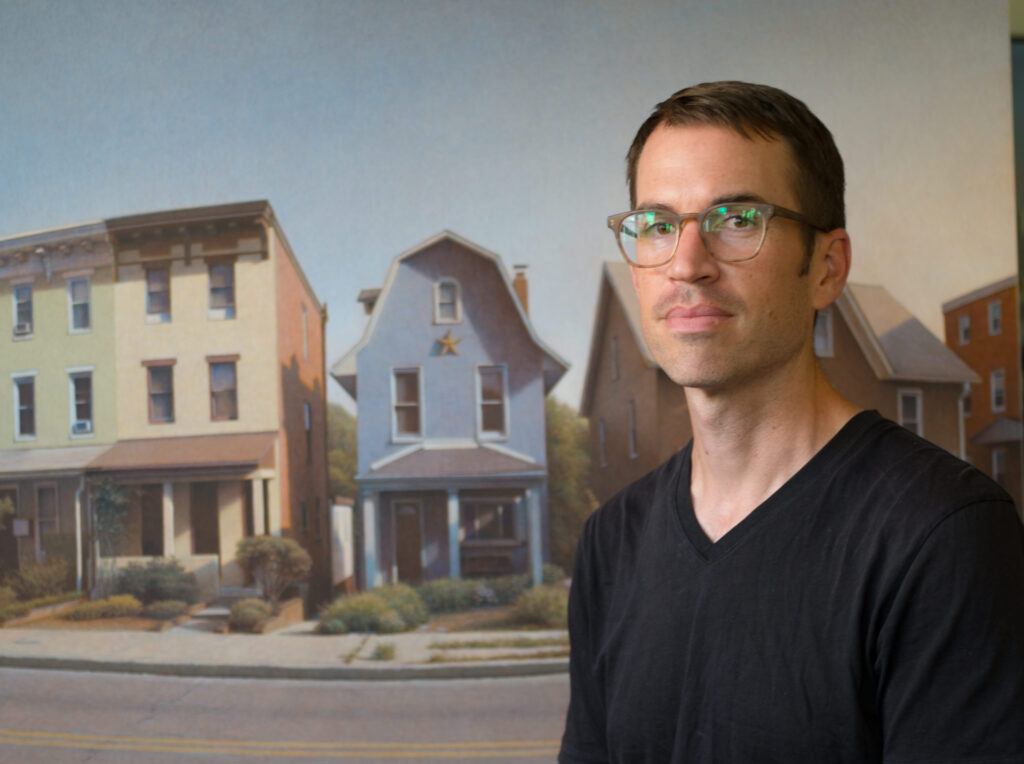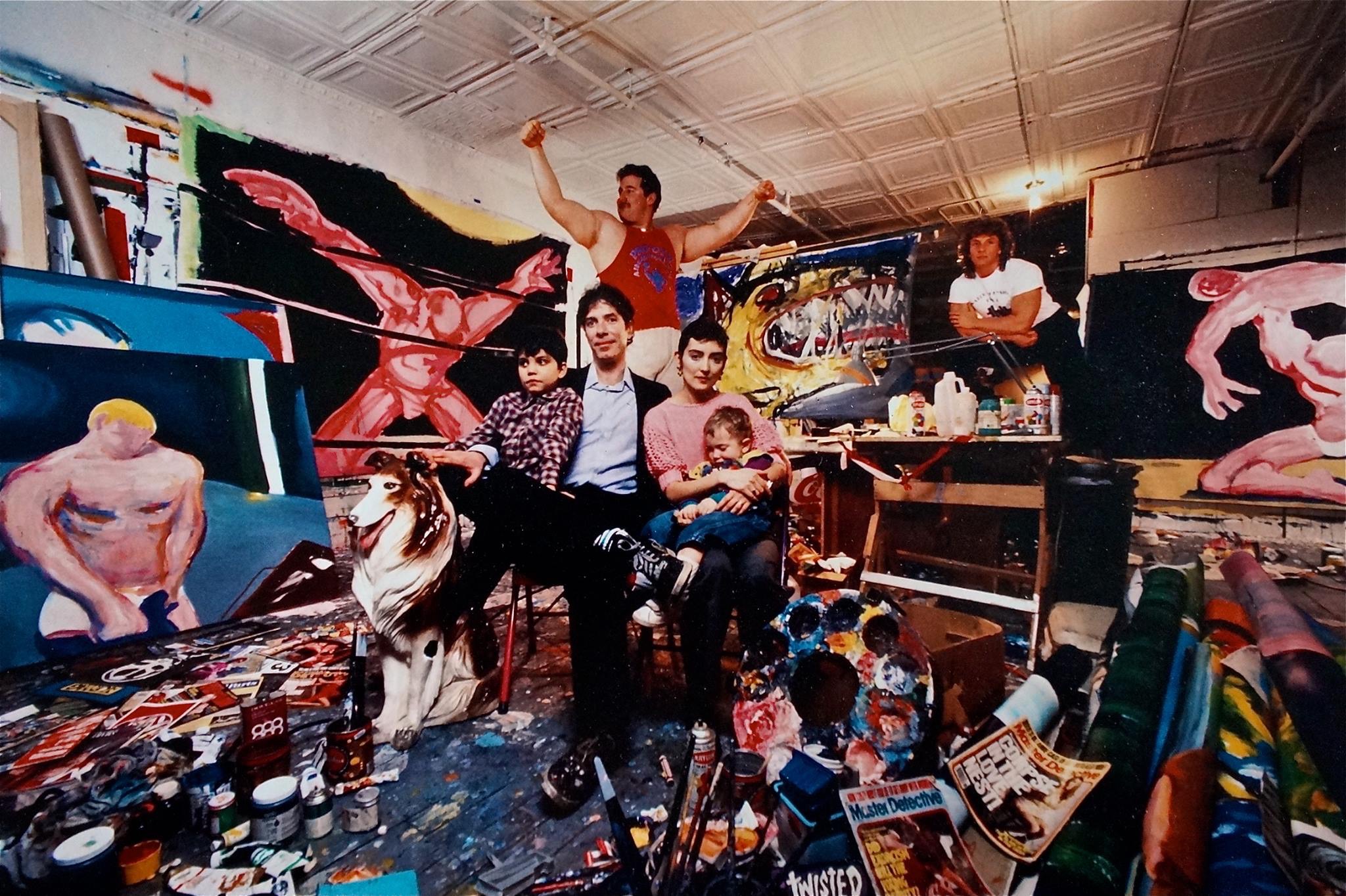
At what age did you decide to become an artist?
As a teenager, around 13 or 14, I had a wonderful teacher named Butch Krieger who introduced me to drawing portraits from the model. He also lent me art books that I would practice drawing from. He gave me the idea that it was possible to be an artist.
How did your parents react when you told them you wanted to be an artist?
They were supportive. They didn’t put much pressure on me in terms of career choices.
Who are your favorite artists?
Canaletto, Constable, Pissarro, Seurat, Degas, Corot, Vermeer, and Hopper, to name a few. There are many other artists I love but these are some of the favorites that guide me in my own work. I’m particularly drawn to artists who make their work from the world around them.
Who is your favorite artist whose work is unlike your own?
Rembrandt and Turner. Rembrandt’s human warmth and Turner’s freedom of execution are both qualities I appreciate but that wouldn’t be obviously associated with my work.
Art book you cannot live without?
Richard Parks Bonnington: The Complete Paintings by Patrick Noon and Kenneth Clark’s Landscape into Art.
What is the quality you most admire in an artist?
Singularity of vision and willingness to pursue it no matter how difficult. At the same time, I greatly value subtlety and nuance both in an artist and their work.
Do you keep a sketchbook?
I do use sketchbooks but prefer to work from a small portfolio with loose sheets. There’s something confining for me about having a book as a closed unit. Also, many of the sketches I make I use for reference so I end up tearing them out of the sketchbooks anyway.
What’s your favorite museum in all the world?
I think the National Gallery in London. It’s the place that helped develop my love of landscape and cityscape painting.
What’s the best exhibition you have ever attended?
I saw a big Turner exhibition in Venice. It was an amazing experience seeing his pictures in the context of his Venetian subjects. The big Seurat drawings exhibit at MoMA in the mid-2000s was another stand out.
If you were not an artist, what would you be?
When I was about ten, I wanted to be a tennis player but then I found out you have to be really good at tennis.
What is one thing you didn’t learn in art school that you wish you had?
I don’t feel I had as much exposure to art history as I would have liked as a young student.
What’s your go-to NY museum?
The Metropolitan Museum
What work of art have you looked at most and why?
Canaletto’s The Stonemason’s Yard is a picture I’m constantly referring to. I have it on the home screen of my computer and look at it every day. I think it’s his greatest work and one that relates quite closely to things I’m trying to achieve in my own cityscapes.
What is your secret visual pleasure outside of art?
If I said, it wouldn’t be a secret.
Do you listen to music in your studio?
Yes. I’ve always loved listening to music while I work. Sometimes podcasts as well.
What is the last gallery you visited?
The National Gallery of Art in Washington
Who is an underrated artist people should be looking at?
John Sell Cotman is an artist that I constantly recommend students look at and study. Being primarily a watercolorist, his work is rarely on display. However, the British Museum in London has some iconic examples. I also really like Walter Sickert. I don’t know that he’s underrated but there is very little work to see here in America. Even in England, most of it is in private collections. Sickert wrote in great detail about his various experiments with painting procedures and technique. My practice of developing pictures from drawings done from nature owes a lot to Sickert despite his very different painting style.
What art materials can you not live without?
Pigments from Kremer. I started making my own paint a few years ago and can’t do without their earth colors.
Do you paint/sculpt/create art every day?
I paint or draw five to six days a week. My painting schedule alternates between working on location, making drawings and studies, and working up pictures in the studio. Because my painting process is very slow and I need to return to the site numerous times, I stick to subjects relatively close to home.
What is the longest time you went without creating art?
I couldn’t work for a couple of months when I moved to Baltimore and had to do a lot of work renovating the house and studio. I was still doing some sketches though. I can’t go long without doing something.
What do you do when you are feeling uninspired?
Reading usually gets me out of creative slumps. I also love to play and watch tennis.
What are the questions that drive your work?
I’m always asking myself how it’s possible to create something meaningful from something commonplace. Painting is a way for me to try to prove that poetry, beauty or whatever else you want to call it comes from how you see versus what you see. Each attempt presents different problems and different solutions.
What is the most important quality in an artist?
Tenacity is very important. It’s such a sustained effort I think it’s impossible without it.
What is something you haven’t yet achieved in art?
I’ve wanted for some time to a few large scale pictures. I would also like to learn some new mediums, namely egg tempera and etching.
What is the best thing about art in the era of social media?
I’ve discovered many excellent artists around the world that I wouldn’t have found otherwise. It’s also been a great way for artists to reach a much wider audience.
Bennett Vadnais teaches “Cityscape Painting” and “Master Studies at the Met, Landscape and Cityscape” at the Art Students League.




